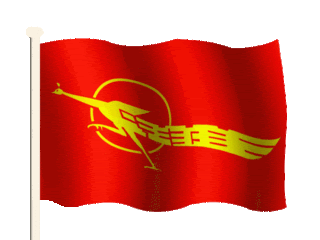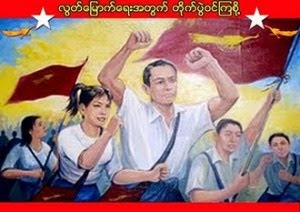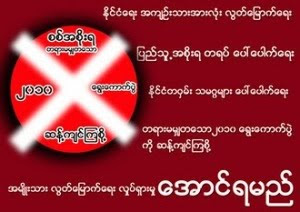“It is not the prerogative of men alone to bring light to this world: women with their capacity for compassion and self-sacrifice, their courage and perseverance, have done much to dissipate the darkness of intolerance and hate, suffering and despair.” ......... Daw Aung San Suu Kyi (August 31, 1995)
Until 1990s, human rights issues were focused on torture, genocide and other forms of abuses, excluding the violence and abuses against women. As the Burmese Democratic leader, Aung San Suu Kyi, mentioned, women and children have always suffered in situations of conflicts although no war was ever started by women.
At the UN conference held in Vienna, grassroots women invaded the hall and presented a petition signed by 300,000 people and forced the delegates to recognize that violence against women in all its forms is a violation of human rights (Kaplan, 2001, pg.199). It was the emergence of the concept that has become an issue of our times, namely, “Violence against women”.
According to the UN Declaration on the Elimination of Violence against Women (1993), violence against women can be defined as
“Any act of gender-based violence that results in, or is likely to result in, physical, sexual or psychological harm or suffering to women, including threats of such acts, coercion or arbitrary deprivation of liberty, whether occurring in public or in private life.”
The Convention on the Elimination of All Forms of Discrimination against Women (CEDAW), adopted in 1979 by the UN General Assembly defines what constitutes the discrimination against women. In 1992, the committee on the Elimination of Discrimination against women recommended that the full implementation of the convention required states to take positive measures to eliminate all forms of violence against women. (General Recommendation No.19, 11th session, 1992)
There are three broad areas of violence against women, such as
Violence against women perpetrated primarily in the family
Violence against women perpetrated primarily in the community.
Violence against women perpetrated or condoned by the state.
Among these areas, the state condoned violence is the most serious issue due to the state’s obligations. Under general international human rights law and under CEDAW, states are obligated to prevent, prosecute and punish all forms of violence against women and support victims evolving international human rights law and practice. So, the acts of violence against women may breach that state’s obligations.
In the case of Burma, the current military regime participated at 4th World Conference on Women in Beijing in 1995, where 189 governments pledged to fight violence. In this pledge, they agreed to end practices and policies that engaged in conditions or accepted violence against women, to prevent violence and protect women at risk of violence, and to build ways for women to win justice and redress when they are targeted for violence. The SPDC Regime then signed the CEDAW in 1997 and submitted the first report to the CEDAW committee in 2000. As a state that has signed the Convention, it is obligated to prevent violence against women. However, state-sponsored violence has been still taking place and women were deserved the treatment they received.
Women’s League of Burma (2005) identified the factors that relate to the women and violence as
Absolute power of the military
No rule of law
Increased militarization
Anti-insurgency policies condoning use of torture, murder and rape as means of intimidation and control
Civil war and poverty driving increasing number of women to migrate. (WLB, 2005, pg.18)
Most of these factors occur due to the lack of responsibilities of the state, especially for health, human trafficking and the state-sponsored violence as a form of rape.
Hundreds of individual cases of rape perpetrated by both SPDC officers and rank-and-file soldiers were well-documented in the reports of
“School for Rape: The Burmese Military and Sexual Violence” by Earth Rights international (1998)
“License to Rape” by Shan Women Actions Network (2002)
“System of Impunity: Nationwide patterns of Sexual Violence by the Military Regime’s Army and Authorities in Burma” by Women’s League of Burma (2004)
All these reports clearly proved that SPDC has been using ‘Rape’ as a weapon to terrorize the ethnic minorities’ people. As it is a state-sponsored violence, all those soldiers commit these shameful acts with impunity.
In addition, violence against women is also linked to the other problems of human trafficking and women’s health. In her speech in 1995, Aung San Suu Kyi mentioned as
“The people of my country want two freedoms that spell security, freedom from want and freedom from fear. It is want that has drive so many of our young girls across our borders to a life of sexual slavery where they are subjected to constant humiliation and ill treatment. It is fear of their political beliefs that has made so many of our people feel that even in their own homes, they cannot live in dignity and security.” (Aung San Suu Kyi, 1995)
This message reflects the in-dept causes of human trafficking, lack of women’s health care and spread of HIV/AIDS inside Burma and across the Thailand Border areas.
There has not been effective legislation in Burma to tackle the human trafficking. It was enhanced by the junta’s economic mismanagement that forces the women to meet the trafficking agents with their only option for employment as sex slaves. In addition, the authorities allow the hotels and inns to do sex business in several cities by means of corruption and the current legislation only targets the sex slaves rather than the sex businessmen. These policies and practices then result the quick spread of HIV/AIDS epidemic.
In conclusion, I would like to urge all countries and transnational organizations to join the Burmese people to stop the systematic violence of the state against its own women.
Khin Ma Ma Myo
(5/03/2006)
- - - - - - - - - - - - - - - - - - - - - - - - - - - - - - - - - - - - - - - -
References
Kaplan, T. (2001) “Women’s Rights as Human Rights: Women as agents of social change”, in Women, Gender, and Human Rights: A Global perspective edited by Marjorie Agosin, Ruters University Press, Piscataway.
Pettman, J. (2005) “Gender issues”, in “The Globalization of World Politics: An Introduction to International Relations” edited by Baylis, J. and Smith, S., 3rd edition, Oxford University Press.
Women’s League of Burma (2005) “Any Progress for the Lives of Women in Burma since Beijing”, Women’s League of Burma, Thailand.
Committee on the Elimination of Discrimination against Women (1992) “General Recommendation No.19”, CEDAW, Internet version
Daw Aung San Suu Kyi’s speech (August 31, 1995)
- - - - - - - - - - - - - - - - - - - - - - - - - - - - - - - - - - - - - - - -
References
Kaplan, T. (2001) “Women’s Rights as Human Rights: Women as agents of social change”, in Women, Gender, and Human Rights: A Global perspective edited by Marjorie Agosin, Ruters University Press, Piscataway.
Pettman, J. (2005) “Gender issues”, in “The Globalization of World Politics: An Introduction to International Relations” edited by Baylis, J. and Smith, S., 3rd edition, Oxford University Press.
Women’s League of Burma (2005) “Any Progress for the Lives of Women in Burma since Beijing”, Women’s League of Burma, Thailand.
Committee on the Elimination of Discrimination against Women (1992) “General Recommendation No.19”, CEDAW, Internet version
Daw Aung San Suu Kyi’s speech (August 31, 1995)


































